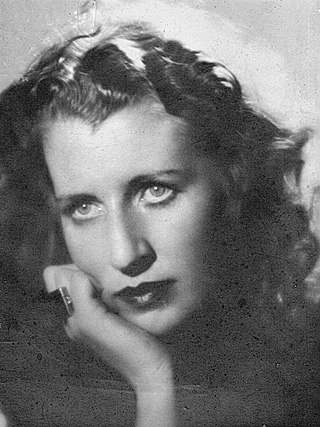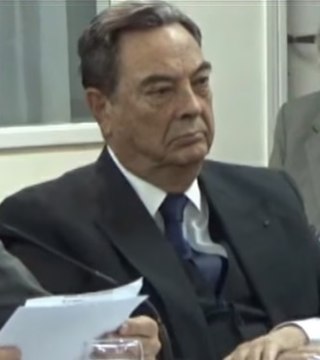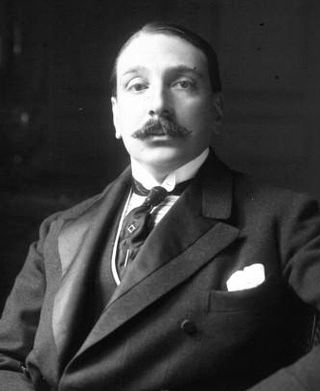Related Research Articles

Norah Lange was an Argentine writer, who was associated with the Buenos Aires avant garde of the 1920s and 1930s.

Juan Carlos Onetti Borges was a Uruguayan novelist and author of short stories.

Juan Martín de Pueyrredón y O'Dogan was an Argentine general and politician of the early 19th century. He was appointed Supreme Director of the United Provinces of the Río de la Plata after the Argentine Declaration of Independence.

Argentine literature, i.e. the set of literary works produced by writers who originated from Argentina, is one of the most prolific, relevant and influential in the whole Spanish speaking world, with renowned writers such as Jorge Luis Borges, Julio Cortázar, Leopoldo Lugones and Ernesto Sábato.

Manuel Rojas Sepúlveda was a Chilean writer and journalist.

Roberto Escalada born Aldo Roberto Leggero was an Argentine actor, an icon of the classic era of Argentine cinema.

David José Kohon was an Argentine film director and screenwriter.

Abel Parentini Posse was an Argentine novelist, essayist, poet, career diplomat, and politician.
Haroldo Conti was an Argentine writer, screenwriter, teacher and Latin professor. On May 5, 1976 he disappeared during the Proceso de Reorganización Nacional military dictatorship; on this day the "Día del Escritor Bonaerense" is held to commemorate this date of his kidnap.

Enrique Rodríguez Larreta was an Argentine writer, academic, diplomat and art collector. He was nominated for the Nobel Prize in Literature ten times.

Liliana Díaz Mindurry is an Argentine writer.
The Battle of Rodeo del Medio, fought in Mendoza Province, Argentina on 24 September 1841, took place between the Federalist army of Ángel Pacheco and the Unitarian army of Gregorio Aráoz de Lamadrid during the Argentine Civil Wars. The consequences of the Federalist victory would last for a decade.

Carlos María Domínguez is an Argentine writer and journalist who has lived in Montevideo since 1989.
Juan José Canaveris (1780–1837) was an Argentine jurist and politician, who served as military man, lawyer, notary, prosecutor and accountant of Buenos Aires. In 1809 he was honored by the Junta Suprema de Sevilla, for his heroic participation in the defense of Buenos Aires, during the English invasions in the Río de la Plata.

Juan Carlos Mondragón is a Uruguayan writer and a literary critic.
The Prodigal Woman is an Argentine drama film directed by Mario Soffici and co-directed by Leo Fleider and Ralph Pappier. It stars Eva Duarte as a wasteful rich woman who has a social awakening. The film is based on a novel by Pedro Antonio de Alarcón.
María Esther Gilio was a Uruguayan journalist, writer, biographer, and lawyer, distinguished for her contributions to newspapers of Uruguay and Argentina. She also wrote for publications in Brazil, Mexico, Spain, France, Italy, Chile, and Venezuela.

María Sáez Pérez de Vernet was the wife of Luis Vernet. She wrote a personal diary during her residence in Port Louis, Falkland Islands, which was preserved together with other documents and letters in the Argentine National Archive when her husband's papers were donated to the Argentine National Archive.
Paula Wajsman was an Argentine psychologist, writer, translator, and researcher.
The following lists events that happened or will happen in Argentina in 2019.
References
- ↑ Cruxen Cal, Sergio (October 29, 2020). "Borges y Onetti: todo los separa y los une lo esencial". La Mañana (in Spanish). Retrieved 2020-11-10.
- ↑ Irby, James (1970). "Aspectos formales de La Vida Breve de Juan Carlos Onetti" (PDF). In Magis, Carlos H. (ed.). Actas del Tercer Congreso Internacional de Hispanistas (in Spanish). México, D.F.: El Colegio de México (Congreso Internacional de Hispanistas). OCLC 1024601220.
- ↑ Shaw, Donald L. (1994). "Which Was the First Novel of the Boom?". Modern Language Review . 89 (2): 360–371. doi:10.2307/3735239. ISSN 0026-7937. JSTOR 3735239.
- ↑ Lewis, Bart L. (1989). "Juan Carlos Onetti and the auto-referential text". Hispanófila (96): 73–86. ISSN 0018-2206. JSTOR 43808230.
- ↑ Eyzaguirre, Luis. "Santa Maria: privado mundo imaginario de Onetti". Centro de Investigaciones Lingüístico-Literarias. Universidad Veracruzana: 196–203.
- ↑ Gaspar, Catalina (1998). "Ficción y realidad en la productividad metaficcional: a propósito de El obsceno pájaro de la noche y La vida breve". Iberoamericana. 22 (2 (70)): 63–80 – via JSTOR.